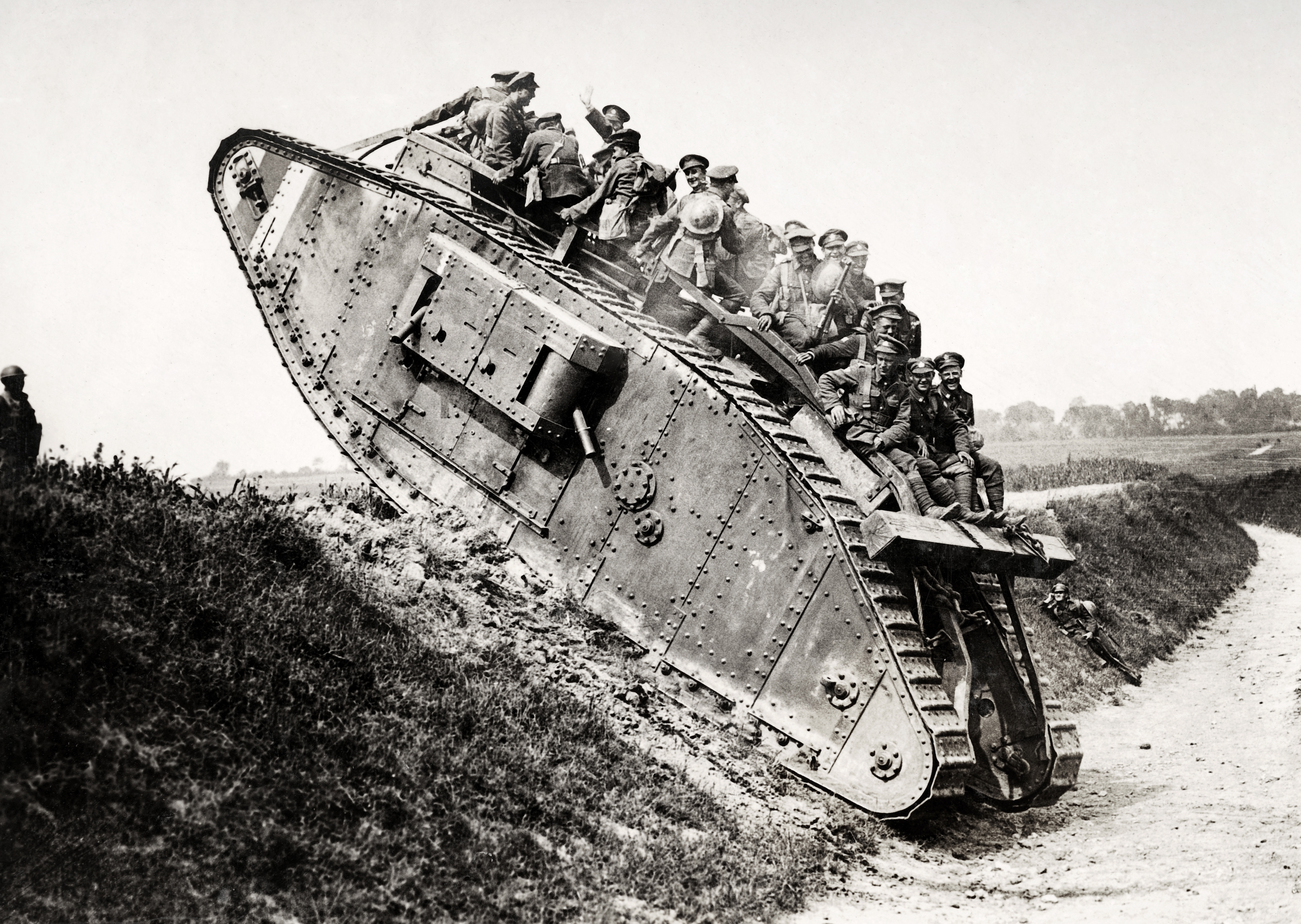 Assassination of Franz Ferdinand, 1914
Assassination of Franz Ferdinand, 1914
 Trench warfare, 1914-1918
Trench warfare, 1914-1918
 Tanks used in WW1
Tanks used in WW1
 Treaty of Versailles, 1919
Treaty of Versailles, 1919
The spread of European imperialism during the 19th century created tensions
throughout Europe that led Serbian nationalists to assassinate Franz Ferdinand,
heir to the Austrian throne in 1914. Germany's "blank check" of support to Austria
emboldened them and the Austrian government declared war on Serbia; Germany
also declared war on Russia. In response, Britain, France, and Russia declared
war on both Austria and Germany. During the war, the development of trench
warfare bogged down the two sides in the middle of Europe, extending the conflict
and increasing casualties. The American entry into the war in 1917 gave the Allies
a boost and ultimately led to their victory.
Prelude
Colonialism in the 19th century often created national boundaries without thought
to existing cultural barriers, forcing multiple different ethnicities together.
This led to an increase in nationalism throughout the world, as people began to
advocate for nation-states composed of single ethnicities. One example of this was
Serbian nationalists, who assassinated archduke Franz Ferdinand, the heir to the
Austrian throne. This led Austria to deliver an ultimatum to Serbia and declare war.
Trench Warfare & Consequences
Both sides thought the war would be quick and fast-moving. However, both
underestimated the impact modern technology would have on warfare. Machine
guns and heavy artillery made defending easier than attacking; this led to
both sides digging trenches and heavily fortifying them. Thousands of troops
were killed attempting to push the enemy out of their trenches, often only
moving the battle lines by a few feet. This slowed down the war near the northern
border of France until the development of tanks.
New Technologies
World War 1 was the first use of modern technology in warfare. Both sides were
eager to use their new weapons. The Great War saw the first use of machine guns,
tanks, and poison gas. All were extremely deadly and increased the number of
casualties dramatically. The unprecedented loss of soldiers in the war led to
increased conscription in most countries, as well as led to women gaining
employment back home.
End of the War & Political Changes
In 1918, Kaiser Wilhelm 11 abdicated as Germany was losing. Russia withdrew in
1917 due to the Russian Revolution and Lenin's takeover of the government. The
Treaty of Versailles in 1919 disarmed Germany and forced them to pay heavy war
reparations, as well as instituting a democratic government-the Weimar Republic.
The Austria-Hungary Empire was dissolved and replaced with multiple nation-states.
 Assassination of Franz Ferdinand, 1914
Assassination of Franz Ferdinand, 1914
 Trench warfare, 1914-1918
Trench warfare, 1914-1918
 Tanks used in WW1
Tanks used in WW1
 Treaty of Versailles, 1919
Treaty of Versailles, 1919